We use cookies to optimize your experience, analyze traffic, and personalize content. To learn more, please visit our Privacy Policy.
By using our site without disabling cookies, you consent to our use of them.
Vineyards
Located in Tamar Valley, Tasmania, Holm Oak’s estate vineyards are steeped in sporting history. In the 1930s, Alexander Patent Racquet Co. selected the site for cultivation of Holm Oak trees, intended for use in the production of tennis racquets. You can read more about the fascinating tale of our property here.
Sadly, the wood from the Holm Oak trees didn’t meet the standards required by the company. That’s where this story takes a fortuitous turn for the Tasmanian wine industry; grape vines were planted in the rich and fertile land in 1983, making Holm Oak one of the older vineyards in Tasmania. Using the original pinot noir and cabernet plantings, we now also cultivate arneis, chardonnay, merlot, pinot gris and riesling, plus a range of moscato, sparkling and fortified wines.
Holm Oak’s premium estate-grown Pinot Noir, ‘The Wizard’ was inspired by the site’s tennis heritage. Sourced from six specific rows of the vineyard, it was named after the famous tennis racquet of the same name. Produced by Alexander Patent Racquet Co https://en.wikipedia.org/wiki/Alexander_Patent_Racket_Company, it was used by Australia’s Jack Crawford when he won Wimbledon in 1933.
You can read more of the story here.
Viticulture
The Vines
Holm Oak has 18hectares under vine. These consist of:
- 0.8 hectare of riesling, comprised of 3 clones established in 1991
- 2.5 hectares of pinot gris established in 2007, 2013 and 2023
- 2.5 hectares of chardonnay made up of 4 clones established in 2007 and 2008, 2014 and 2023;
- 9 hectares of pinot Noir. Clones currently planted include: MV6, D5V12, 114, 115, 777, D4V2, 521, Abel and 777. The first two clones mentioned were established in 1983 making them some of the oldest Pinot Noir vines in Tasmania. Read more about the clones selected – https://www.holmoakvineyards.com.au/clonal-conversations/
- 1.8 hectares of cabernet established in 1983;
- 0.6 Hectares of merlot established in 2013 and 2020
- 0.3 Hectares of cabernet franc established in 1983 and 2020
- 0.3 Hactares Arneis established in 2007
- 0.2 Hactares Shieaz established in 2015
Vine spacing varies from 2000 to 4000 vines to the hectare. Plantings from 2007 onwards are just over 2000 vines to hectare.
All plantings run North/South to maximise exposure to the sun.
A fascinating property, learn more about how the vineyards have such variations and what this means for the resulting wines.
Vineyard Management
We have found that arched cane vertical shoot position seems to produce the best results for us. We prune the majority of the vineyard this way. During the growing season we shoot thin, leaf pluck and remove shoulder bunches if necessary. We may need to trim tops of shoots just prior to veraison depending on the level of vigour. We only leaf pluck the pinot noir and riesling on the Eastern side of the vine.
Irrigation is used sparingly, with some of our older vines able to maintain growth with rainfall received during the year. Annual rainfall in the Rowella area of the Tamar Valley is around 600-660mm. All harvesting and pruning is currently carried out by hand. The majority of Holm Oak’s vineyard operations are handled directly by us, ensuring we keep in touch with vineyard changes and fruit quality outcomes.
Read more as Tim describes how to prune a grapevine.
Harvesting of Fruit
We use a mix of both hand harvesting and machine harvesting depending on the variety. The majority of our pinot noir is hand harvested. This helps us to identify small nuances in different parcels of fruit and process them accordingly in the winery. Our fruit sorting is done in the vineyard. Any inferior or diseased bunches are removed prior to picking, or are selected out by our small, well-trained picking team.
Sustainability
Our grape growing philosophy is to produce the cleanest product with the softest management practices available. This involves using some organic and modern soft chemistry. We are in the process of adopting some organic measures on a larger scale. We have seen some disastrous results from the use of these practices so we are proceeding with caution, believing they are more easily adopted in lower rainfall areas. We are also challenged by the use of the lunar cycle for vineyard management practices. In general, as a result of stringent export requirements, the Australian wine industry as a whole adopts quite a minimalist approach when it comes to chemical usage.
Read more about some of our vineyard practices on our blog
The Holm Oak sustainability footprint
The Terroir
Climate
Tasmania has a moderate maritime climate, cooled by prevailing westerlies off the Southern Ocean, providing conditions that are generally free from extremes. Mild spring and summer temperatures, with warm autumn days and cool nights, allow the grapes to ripen slowly on the vine. This means maximum varietal flavour development is achieved without losing the essential natural acid that gives Tasmania’s wines freshness and balance. Tasmania has a climate suitable for the production of super premium wines and is one of Australia’s premier regions for Pinot Noir table and sparkling wines.
The Dirt
The Tasmanian landscape is dominated by dolerite-capped mountains that shelter the state’s vineyards from high winds and rainfall. On the lower slopes, the vineyard soils are formed from ancient sandstones and mudstones and also from more recent river sediments and volcanic rock. There are a few different soil types at Holm Oak but the majority is Acidic Grey Kandosol on Permian mudstone. Some of the land area is deemed too rocky for viticultural production, with quite a bit of sheet rock that only blasting can penetrate.
